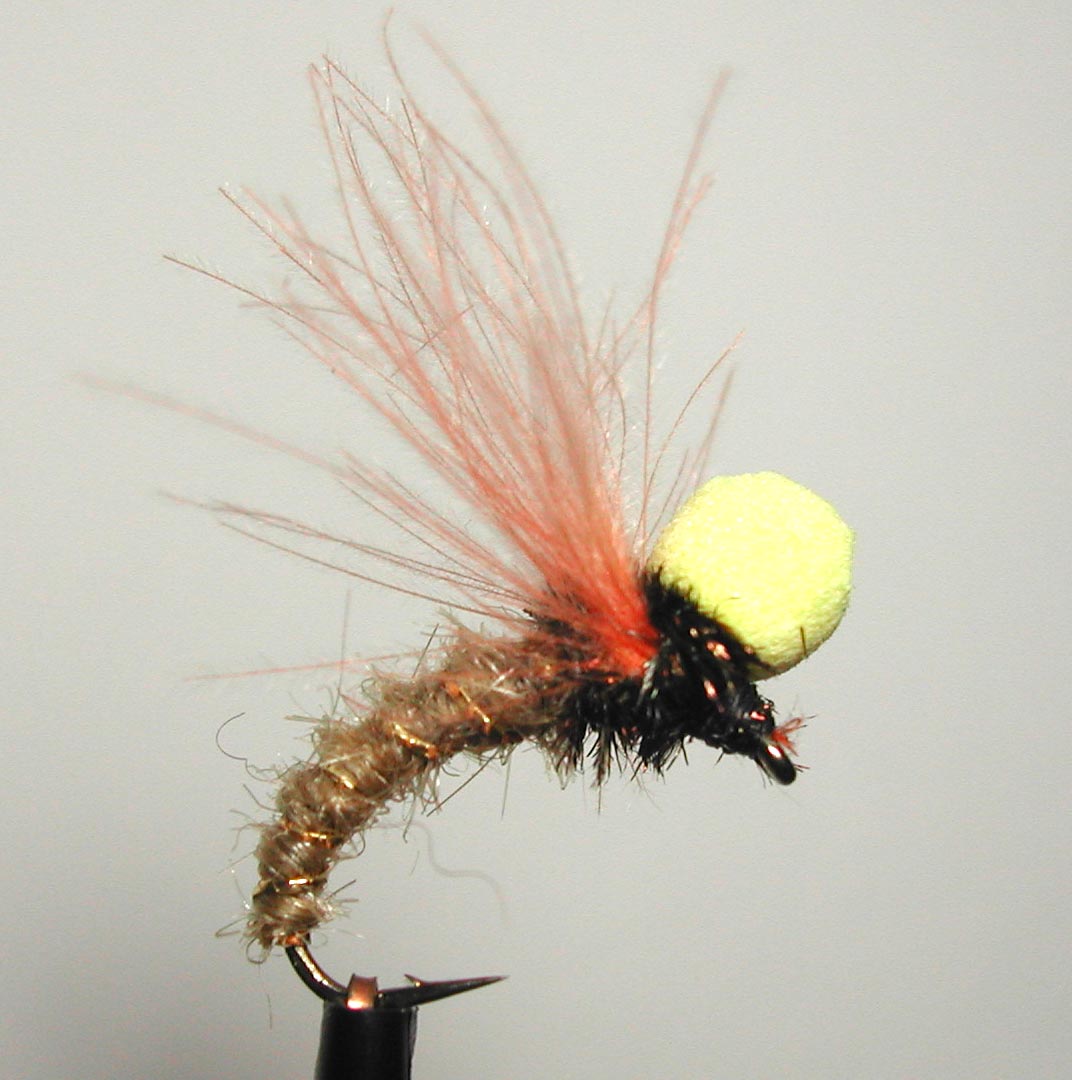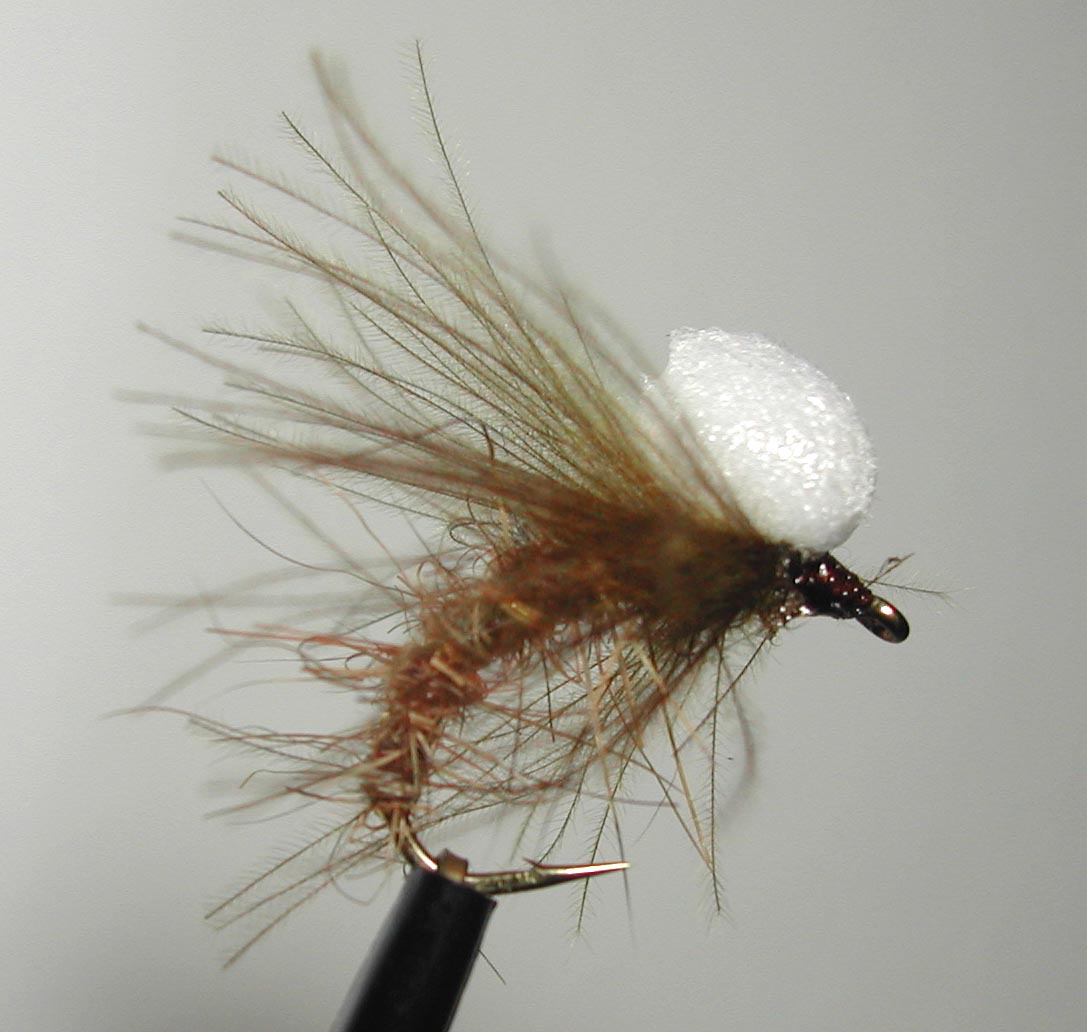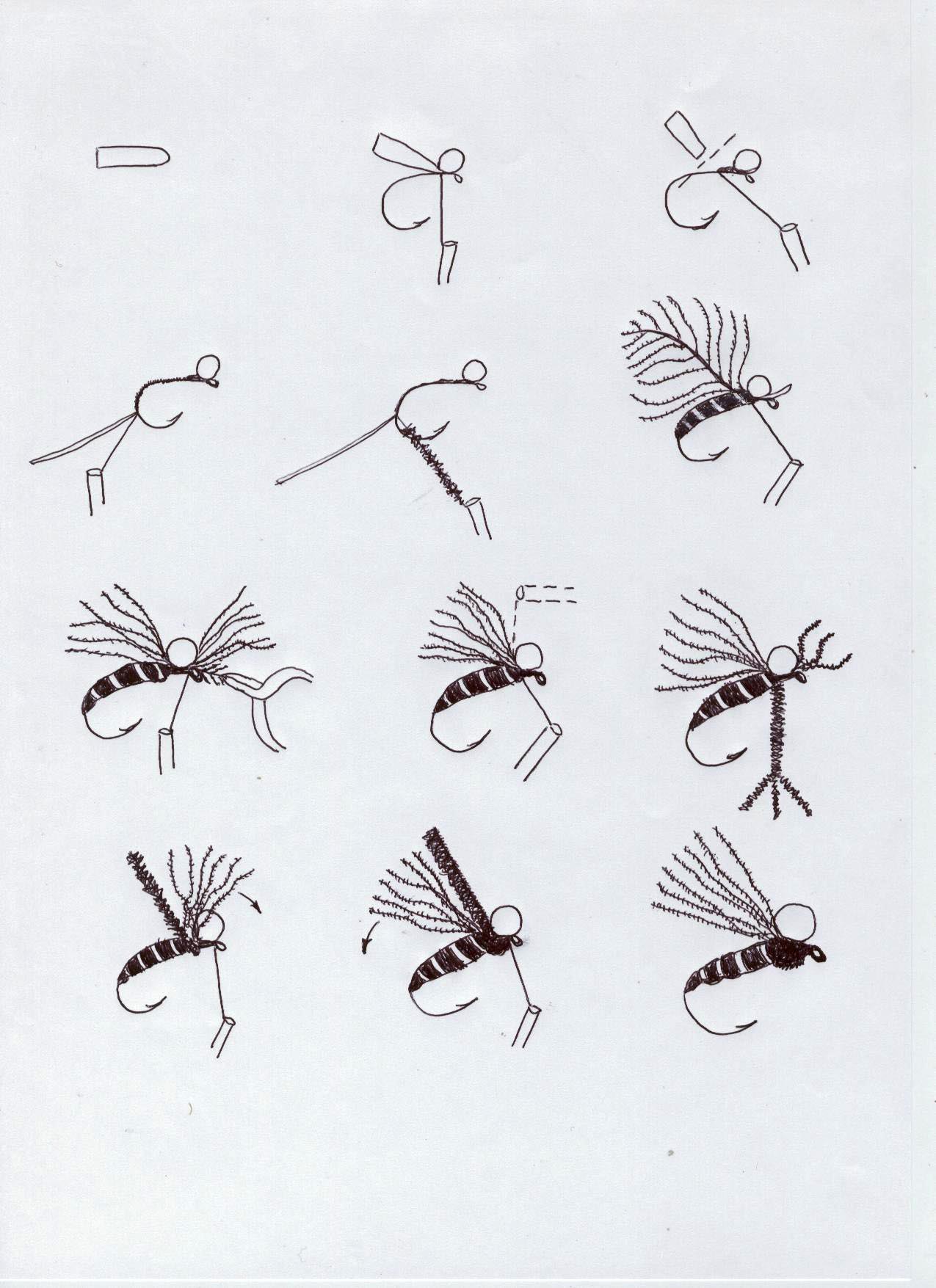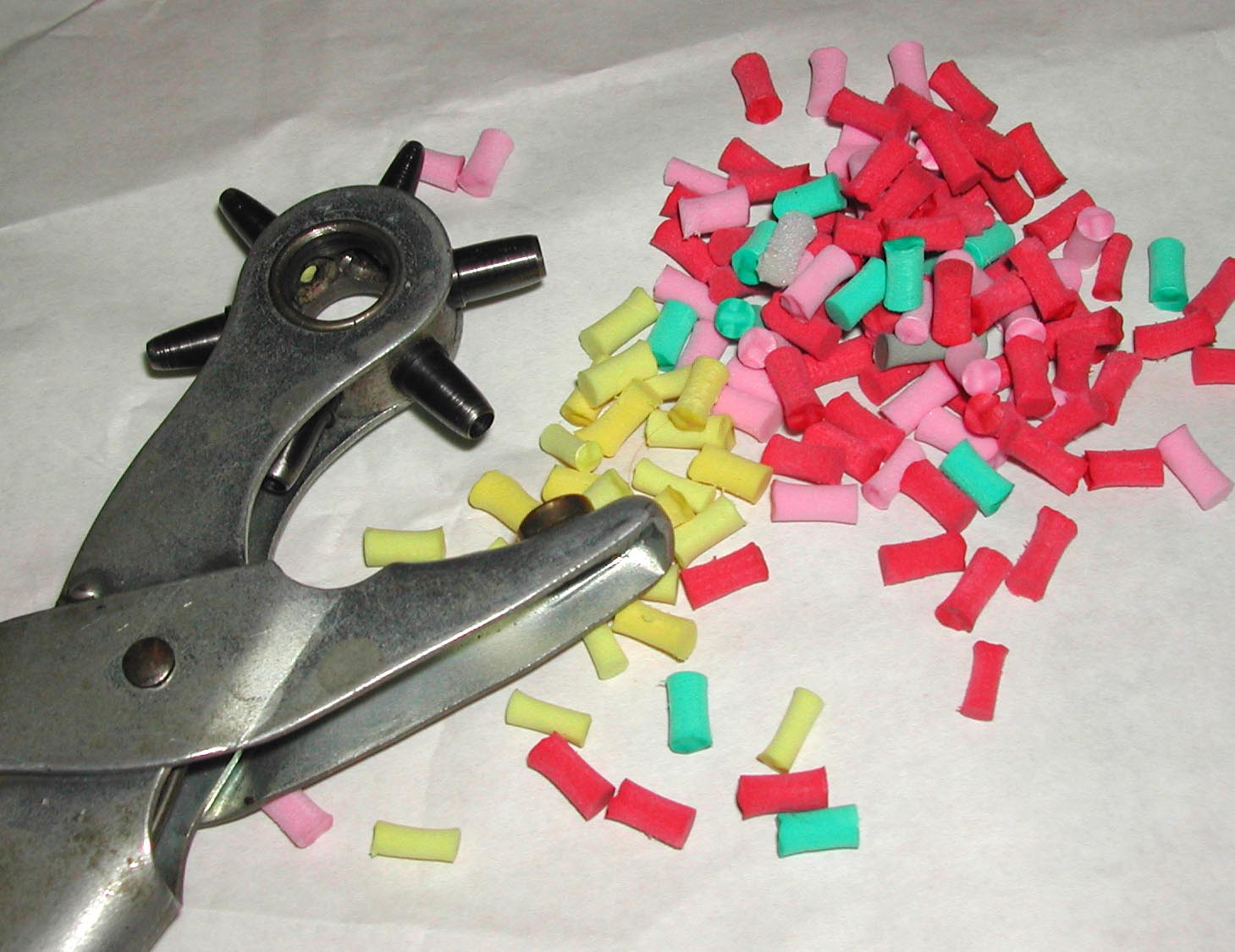THE RONCALLO SPECIAL

An effective emerging nymph imitation from the Master himself, Agostino Roncallo!
Agostino writes:
‘In the 80s a fisherman friend introduced me to a very attractive emerging nymph.
It was a nymph floated by a ball of foam wrapped in a strip of nylon stocking, imitating the insect's wing pouch.
Sometime later, I learned that the creators of the nymph were John Goddard and Brian Clarke, who presented the pattern in their book, ‘The Trout and the fly. A New Approach’.
I tried to tie some out of curiosity and the first time I used them I had proof of their effectiveness. I still remember, in minute detail, capturing two beautiful brown trout.
The first imitations of the nymphs I tied according to the instructions of Goddard and Clarke, except for the foam ball. I replaced it with a polystyrene ball.
Then, having noted that the wing pouch of natural nymphs is dark, I tried to paint the polystyrene ball with black paint and the paint melted the polystyrene.
Painting the ball with a pen was also not satisfactory. I swapped the nylon stocking with polyethylene film and used painted foam. When eventually I got what I wanted - a dark and shiny wing case – a problem arose: I could not see it well in water.

So I decided to add a small wing to the original pattern, which would allow me to see the imitation, and I thought immediately of CDC. I finally got a nymph that was effective and visible.
Throughout the eighties this nymph did not have a name because I considered it a variant of Goddard and Clarke’s nymph.
In the early nineties, I did away with the polythene and changed the type of hook I used to a grub hook.
In the mid-nineties, I showed the nymph Claudio Tagini, friend who lived in California where he organized fishing trips in the West of the USA. Now he's back in Italy, but continues arranging fishing trips to the U.S. continues to organize them.
Claudio is one of the greatest admirers of this nymph, caught heaps of fish with it in the USA, from bluegill to salmon. He then named it the Roncallo Special and with this name it is now well known.’

TYING THE RONCALLO SPECIAL

Dressing
- With a leather punching pliers press cylinders from a sheet of foam and round one end.

- Fixed the cylinder near the eye of a grub hook to get a ball.
- Trim off the excess foam.
- Tie a piece of wire tinsel to the shank.
- Add dubbing to the tying thread.
- Wrap the dubbing up the shank of the hook to form the body of the imitation and tie it off next to the foam ball
- Tie in a CDC hackle.
- Wrap the hackle around the foam ball.
- Tie off the hackle next to the eye of the hook, move the fibres back and spread them on both sides of the ball of foam, trapping them with with a few turns of thread .
10. Tie in three herls peacock next the foam ball, twist them and wrap in front and behind the wings to form the thorax.
11. Tie off and the imitation is finished.

Roncallo Special with a sela's fur body
‘The assembly just described is the original one in my book ‘Magie in CDC’.
Over time and with experience in using this pattern, I found that it works without the Peacock Herl thorax.
I believe that the ideal hook to tie the Roncallo Special is a size 12 grub hook.
In my opinion, the nymph is effective because, while the abdomen is placed below the water surface, the thorax and the wings are arranged respectively above and flush with it.
It can be used on fish during a hatch but the pattern is equally able to entice fish from the bottom of the river that are insensitive to other imitations.
In waters where the fish are subjected to considerable fishing pressure and are caught with tiny flies, a Roncallo Special tied on a size 12 grub can still be effective.
This has happened to my friends and I can confirm the same from personal experience.
Imitation is used in all types of water, from slow to fast, and is very good for fishing in lakes.’
Agostino Roncallo


